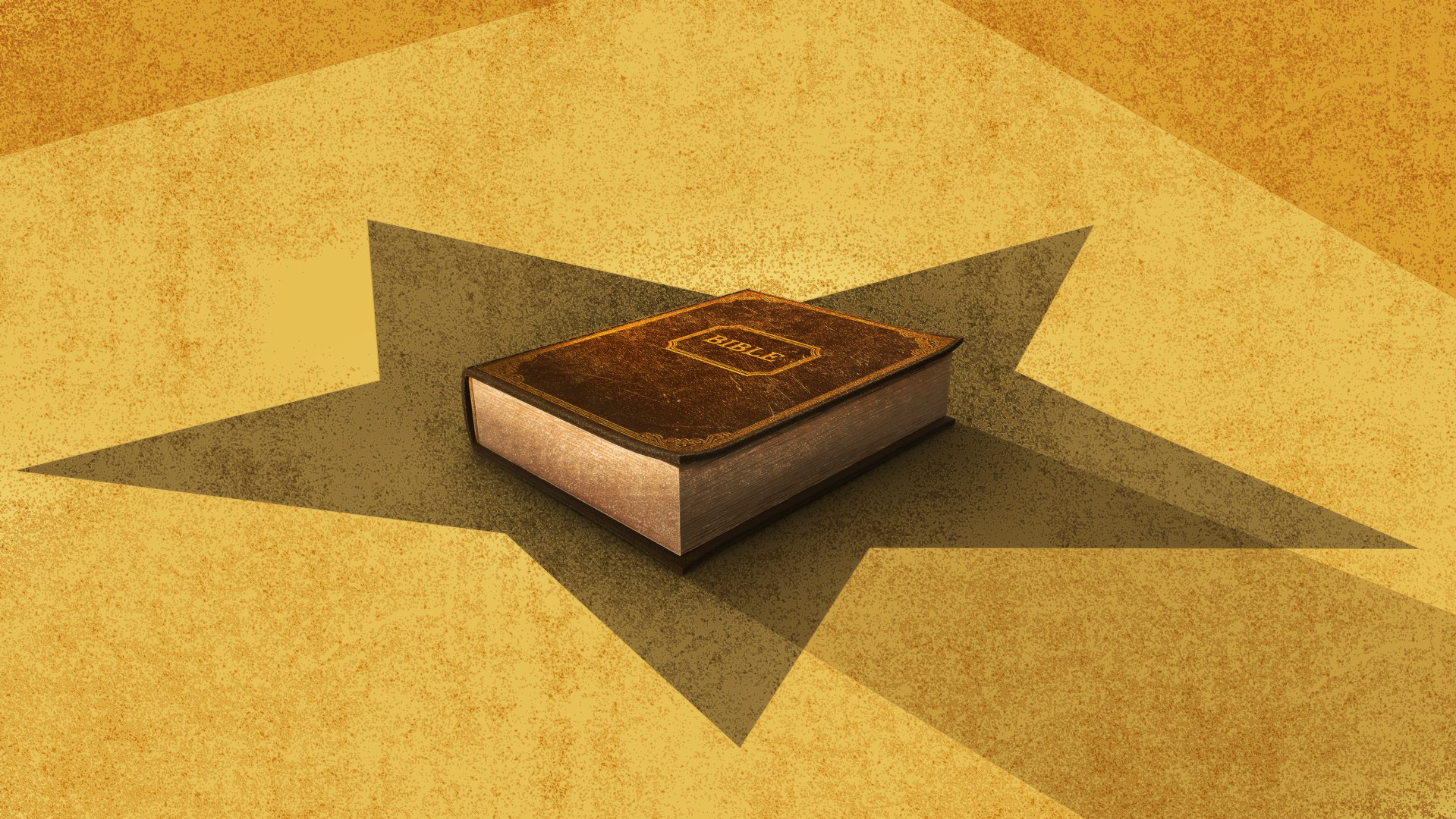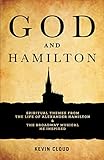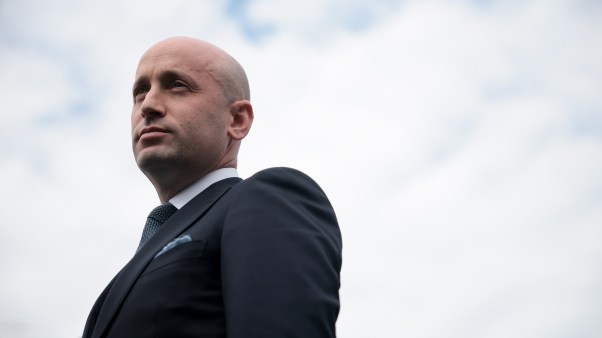If not for the outbreak of COVID-19, the wildly successful Broadway musical Hamilton would embark on its fourth tour this fall. Instead—to the delight of fans and penny-pinching show-goers—a planned film version, featuring the original cast members, will begin streaming this week on Disney+, over a year ahead of its original theater release date. What was once available only with access to an urban center and extra cash is now coming to a screen near you.
God and Hamilton: Spiritual Themes from the Life of Alexander Hamilton and the Broadway Musical He Inspired
Deep River Books LLC
240 pages
$6.39
Hamilton’s screen debut is also noteworthy in that it comes at a time of elevated social unrest in America. Many people are anxious or angry about racial injustice, police brutality, and hyper-polarized politics. For pastor and church planter Kevin Cloud, the show—with its moral vision and artistic innovations—offers an invaluable lens on both our current moment and our Christian responsibilities within it. Cloud, the author of God and Hamilton: Spiritual Themes from the Life of Alexander Hamilton and the Broadway Musical He Inspired, leads workshops on faith and creativity around the country, drawing on his book. Writer Sarah Arthur corresponded with Cloud about using Hamilton to explore the intersection of faith, the arts, and social change.
Why has this story about a distant historical figure struck such a chord?
I don’t think anyone could’ve imagined how this musical would catapult Alexander Hamilton from a forgotten Founding Father into a cultural icon. A number of different dynamics have worked together, creating a deep resonance within our culture.
First and foremost, Hamilton is an extraordinary work of art. It won 11 Tony Awards in 2016, including best musical, and a Pulitzer Prize for drama. I agree with Michelle Obama, who called it “the best piece of art in any form that I have ever seen in my life.” As a genre-bending, multiracial retelling of history, it truly is a work of genius.
Hamilton also resonates because the story intersects with a number of critical social issues of our time, including immigration, race, gender equality, and diversity. Hamilton himself was an immigrant from the Caribbean, and a major theme throughout the musical is Hamilton’s battle for dignity and equality. We see this exact same battle being played out in the protests across our country today.
More broadly, the story centers on fundamental themes of the human experience: grace, forgiveness, failure, death, and redemption. Watching these themes play out on the stage gives us hope, challenges us, and casts a vision for what our lives might look like. As I’ve traveled the country speaking about my book, I’ve heard countless stories of people who said seeing Hamilton changed their life.
Josh Hart, an NBA basketball player, has said that seeing Hamilton on Broadway challenged him and gave him a new perspective: “Sometimes when you’re so caught up in your world, you don’t really see other things. So it’s great to see other people in their worlds, take things … from ‘Hamilton,’ and bring it back to your world.”
There are many spiritual themes in Lin-Manuel Miranda’s storytelling—I’m thinking, for instance, of George Washington’s parting song “One Last Time,” where he quotes Micah 4:4. How can churches interact with the movie version to spark faith conversations?
After seeing the musical, I read everything I could about Hamilton, including Ron Chernow’s biography, which inspired the musical. I learned that the great themes of the gospel really were at the center of Hamilton’s life. Hamilton practiced a sincere and authentic faith throughout much of his life. It blossomed as a young boy in the Caribbean. He wrote powerful hymns in his youth, which articulate an intimate knowledge of life with God. One hymn, “The Soul Ascending into Bliss,” says,
Hark! Hark! A voice from yonder sky, Methinks I hear my Saviour cry, Come gentle spirt come away, Come to thy Lord without delay.
When Hamilton arrived in New York City in his later teen years, he studied at King’s College and participated in the school’s rhythms of religious devotion. He attended daily morning chapel, evening prayers, and church services twice on Sunday. His roommate once journaled about the fervency of Hamilton’s prayers.
And yet Hamilton also experienced seasons where he drifted from his religious devotion. His wife, Eliza, was probably more devoted, while Hamilton seemed to have experienced alternating seasons of authentic faith and genuine doubt. We see this struggle in the powerful song, “It’s Quiet Uptown,” which shows Eliza and Alexander struggling through the death of their eldest son Philip, who was shot and killed in a duel that Philip initiated to defend his father’s honor. Alexander sings, “I take the children to church on Sunday / A sign of the cross at the door / And I pray / That never used to happen before.” The struggle between faith and doubt can encourage us as we wrestle through those alternating seasons in our own lives.
Hamilton also tells a story about a man who lives with remarkable initiative. In the most famous lyric from the musical, Hamilton declares, “I am not throwing away my shot.” That line could have been his life’s mantra. He arrived in America at the dawn of the revolution as a poor, immigrant college student. Less than 20 years later, he had become the second most powerful man in the newly formed United States. The remarkable trajectory of Hamilton’s life could most accurately be explained by his intense bent toward initiative. When Christians behave as though we can’t overcome major challenges, such as existing systems, Hamilton’s story challenges us to see our circumstances differently.
In one God and Hamilton workshop I led for middle-school students, one girl told me her story of deciding to run for student council. She almost bailed at the last minute, because she was terrified of giving a speech in front of her peers, and she feared the potential embarrassment of not winning. But then she thought of Hamilton, and decided that she was not going to throw away her shot.
Alexander’s remarkable wife, Eliza, struggled with forgiving her husband for his extramarital affair with a woman named Maria Reynolds, which became public knowledge and turned into our country’s first government sex scandal. Eliza eventually forgave Alexander in one of the most powerful moments in the musical. The chorus sings out, “Forgiveness. Can you imagine?” In that moment you can feel the atmosphere in the theater change. Each of us must decide if Eliza’s example will inspire us to forgive those who have hurt us.
Hamilton’s creator, Lin-Manuel Miranda, says that these moments, which he calls “moments of action,” are one of his favorite aspects of live theater. Much like the parables of Jesus, these scenes confront us and demand a response. Hamilton is crammed full of these moments of action.
In one church I spoke at, a woman approached me after my sermon and told me that Hamilton saved her life. One particular night, she listened to the soundtrack of Hamilton as she seriously contemplated suicide. When she heard George Washington sing, “Dying is easy, young man / Living is harder,” something shifted inside of her. She realized that taking her life would be the easy way out—that the harder path was choosing to live. God used this story to literally save this woman’s life.
As a pastor and musician, you see engagement with the arts and creativity as an act of worship. Can you elaborate on that?
The Scriptures tell us that we are made in the image of a creative God. We see this truth all the way back in the first chapter of Genesis, where the very first thing we learn about God is that God creates. Later in the same chapter, the text tells us three times that we are made in the image of God, stressing our call to create. Genesis 2 reinforces this call, as God invites humanity to partner with him in the creative process by naming the animals. I believe God continually invites each of us into that creative partnership today. Every time we attempt a creative act, or engage in thoughtful reflection on creative work, we fulfill our call to live creatively. Answering this call makes us more fully alive and brings glory to God in the process.
Every time we create, we send out a ripple that holds an almost unimaginable potential for good. When I present my workshop on creativity and faith, participants share stories about how creative acts transformed their life and the lives of those who experience their work. One college student told his classmates that seeing a movie about Jackie Robinson helped him find perspective in a dark season when he experienced intense bullying. A woman shared tearfully that taking a job as a worship leader at a church brought her a greater sense of fulfilment and purpose than she had ever experienced. A stay-at-home mom, overwhelmed by raising young children, came to life as she took up photography. Each of these people experienced the truth that creativity helps us become more fully alive.
There’s so much genre-bending in Hamilton, including the use of hip-hop, rap, and spoken word poetry on a Broadway stage, as well as casting people of color in the roles of America’s Founding Fathers. What’s the takeaway for faith communities as they engage the arts?
The church gains so much by engaging thoughtfully in the arts. Specifically, the arts can lead and guide us in the critical act of imagining creative responses in times of national unrest.
Bringing hip-hop to Broadway was a risky and unprecedented move, but it provided the perfect genre for a musical about the American Revolution: a movement by and for people on the underside of power. Casting actors of color as the Founding Fathers was another imaginative decision that turns expectations upside down and challenges audiences to open themselves up to new possibilities. Christopher Jackson, who played George Washington in the original Broadway cast, said, “By having a multicultural cast, it gives us, as actors of color, the chance to provide an additional context just by our presence onstage, filling these characters up.”
What would happen if faith communities experimented with unusual forms, genres, and tropes to create new music, communicate in unexpected ways, or fearlessly engage cultural narratives from the underside of power?
For instance, I work as director of spiritual life at the Culture House, a faith-based arts conservatory in Kansas City. We have a professional dance company, Störling Dance Theatre, that has performed a show called Underground for the last 15 years. The show tells the story of the Underground Railroad and highlights the role the church played in freeing slaves.
Each year, as church and community leaders watch this story performed on the stage, it fuels their imaginations. These performances have led to countless examples of building bridges across racial divides in our city. The story helps city leaders imagine how we might better pursue racial reconciliation today. Is there a more pressing issue for faith leaders to grapple with right now?
You make the case that Miranda’s take on Hamilton’s life is ultimately about forgiveness and hope, despite the relentless tragedy in scene after scene. How can we look to this story for signs of hope amid our own national unrest?
The musical makes for great drama because Hamilton experienced so much heartbreak. His father left his family when he was a young boy, and his mother died a few years later. He joined the American Revolution soon after arriving in America and faced the unimaginable horrors of war. He rose to one of the highest offices in the land but later became a political outcast. He lost his son to a duel of honor—and lost his own life in the same manner. Yet in the face of all of that tragedy, Hamilton ultimately tells a story of redemption.
Much of the pain and brokenness in Hamilton’s life originated from his status as an orphan, a reality that haunted him. Hamilton, like many orphans, surely grew up feeling abandoned, unwanted, and unloved. In his private letters we see him struggling with loneliness and inadequacy.
I can imagine heartbreaking conversations where Hamilton shared his pain and suffering with his wife, Eliza. I like to imagine Eliza feeling a deep sense of empathy about Hamilton’s struggles, as any loving spouse would. Hamilton’s burdens must have become her burdens as well. After then-Vice President Aaron Burr shot and killed her husband on the dueling ground, Eliza took those burdens and gave everything she could to redeem them.
As Eliza slowly recovered from her grief, she discovered a new calling. She partnered with a small group of women to found the first private orphanage in New York City. She worked to alleviate the suffering of orphans who faced challenges like her husband had faced.
The final scene of Miranda’s musical features one of the most powerful artistic representations of redemption I’ve ever witnessed. In the final song, Eliza sings about the orphanage: “I help to raise hundreds of children / I get to see them growing up / In their eyes I see you, Alexander / I see you every time.” The musical ends with a brilliant white spotlight shining on Eliza’s face as she looks up to heaven and smiles, her face exploding with joy as the theater fades to black.
The orphanage that Eliza founded still exists today under the name Graham Windham. Jess Dannhauser, the president and CEO, says that “[w]hen Eliza sings that she sees Alexander in the eyes of these orphans, I see that as her saying these kids have great potential inside of them. That spirit animates our work today.”
Eliza took Alexander’s greatest source of pain and somehow made it beautiful, which is exactly what God does in each of our lives. At times, our world feels overwhelmed by darkness, suffering, and tragedy. But the promise of the gospel is that somehow, in some way, God will eventually make it all beautiful. That God will take our pain and suffering and redeem it. Our role as the church is to speak and live out this word of hope and redemption, not merely as a response to social change but as a catalyst.











